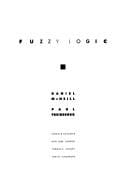Fuzzy Logic: The Beginner’s Guide to Soft Reasoning and Smart Control
Discover how fuzzy logic turns vague human concepts into actionable control signals, powering everything from washing machines to self-driving cars.

What Is Fuzzy Logic?
Fuzzy logic is a form of many-valued logic derived from fuzzy set theory, where truth values range between 0 and 1 instead of being confined to the binary choices of true or false. Conceived by Lotfi Zadeh in 1965, fuzzy logic was designed to handle the kind of approximate reasoning that humans employ every day. Instead of asking whether a statement is absolutely true, fuzzy logic asks how true the statement is, capturing nuance and uncertainty that classical logic cannot.
How Fuzzy Logic Differs From Classical Logic
Classical or Boolean logic assigns crisp membership: an element either belongs to a set or it does not. In the real world, however, concepts such as "hot," "fast," or "tall" are inherently subjective and cannot be pinned down to a single threshold. Fuzzy logic bridges this gap by allowing partial membership. A day can be 0.7 "hot" and 0.3 "not hot," enabling systems to model gradations of reality more closely than binary logic ever could.
Core Concepts of Fuzzy Sets
Membership Functions
At the heart of fuzzy logic lies the membership function, a curve that maps each element in the input space to a degree of membership between 0 and 1. Common shapes include triangular, trapezoidal, and Gaussian functions. Choosing the right shape affects the sensitivity and performance of a fuzzy system, making membership function design both an art and a science.
Linguistic Variables
Fuzzy systems interpret inputs through linguistic variables such as temperature, speed, or humidity. Each variable is associated with fuzzy sets—like "cold," "warm," and "hot"—that describe its possible states. These human-friendly labels make rule creation intuitive, allowing domain experts without deep programming knowledge to contribute.
Fuzzy Rules and Inference
Fuzzy logic uses IF–THEN rules to map inputs to outputs, for example, "IF temperature is hot AND humidity is high THEN fan_speed is high." A fuzzy inference engine aggregates and evaluates these rules, often using operators such as MIN for logical AND and MAX for logical OR. Finally, the system converts fuzzy outputs back to crisp values through a process called defuzzification, making the results actionable for digital controllers.
Real-World Applications of Fuzzy Logic
Because fuzzy logic excels at interpreting ambiguous data, it has become a staple in diverse industries:
- Consumer Electronics: Washing machines use fuzzy controllers to optimize wash cycles based on fabric type and load size.
- Automotive: Fuzzy cruise control systems adjust speed smoothly by considering the distance to vehicles ahead and road conditions.
- Climate Control: HVAC units regulate temperature and humidity more efficiently by evaluating multiple sensor inputs.
- Medical Diagnosis: Decision-support tools weigh imprecise symptoms and lab values to suggest possible conditions.
- Finance: Trading algorithms evaluate subjective indicators such as "market sentiment" and "risk appetite" in real time.
Advantages of Using Fuzzy Logic
Fuzzy logic systems are praised for their robustness, interpretability, and ability to integrate with existing control frameworks. They tolerate noisy or missing data gracefully, making them ideal in environments where measurements are imperfect. Additionally, fuzzy rules read like natural language, so stakeholders can audit, understand, and refine system behavior without needing a PhD in mathematics.
Limitations and Challenges
Despite their strengths, fuzzy systems are not a universal remedy. Designing appropriate membership functions and rule bases often requires domain expertise and iterative tuning. Large rule sets can become unwieldy and may struggle to scale. Moreover, fuzzy logic does not inherently learn from data; pairing it with machine-learning techniques or evolutionary algorithms is necessary when adaptive behavior is required.
Getting Started with Fuzzy Logic in Practice
Implementing a simple fuzzy controller is easier than many newcomers expect. Open-source libraries such as scikit-fuzzy for Python or jFuzzyLogic for Java provide ready-made tools for defining variables, membership functions, and rule bases. A typical workflow involves five steps:
- Identify the system inputs and outputs.
- Define linguistic variables and their associated fuzzy sets.
- Create an interpretable rule base that connects inputs to outputs.
- Select an inference method (e.g., Mamdani or Takagi–Sugeno).
- Validate and refine the system using real-world data.
By following this blueprint, engineers and hobbyists alike can prototype controllers that outperform traditional PID loops in handling nonlinear or time-varying processes.
Future Outlook: Fuzzy Logic Meets AI
As artificial intelligence continues to evolve, fuzzy logic is finding new relevance. Neuro-fuzzy systems combine neural networks’ learning capabilities with fuzzy logic’s interpretability, creating hybrid models that can learn membership functions automatically while maintaining transparent rule sets. Similarly, fuzzy reinforcement learning agents are being explored for autonomous vehicles and smart grids, where safety demands both adaptability and explainability.
In an era increasingly driven by data yet fraught with uncertainty, fuzzy logic offers a pragmatic middle ground between rigid rules and black-box models. Whether fine-tuning household appliances or optimizing industrial processes, its capacity to reason with degrees rather than absolutes remains as valuable today as it was when first proposed.